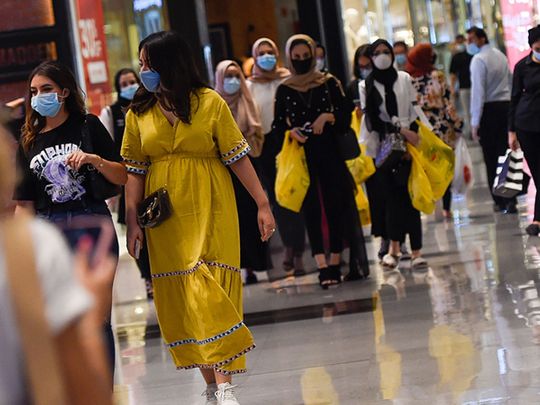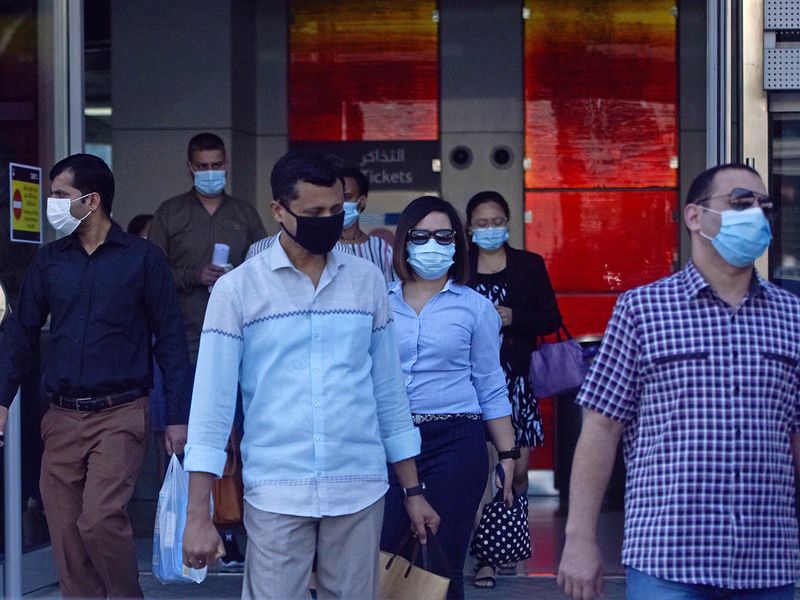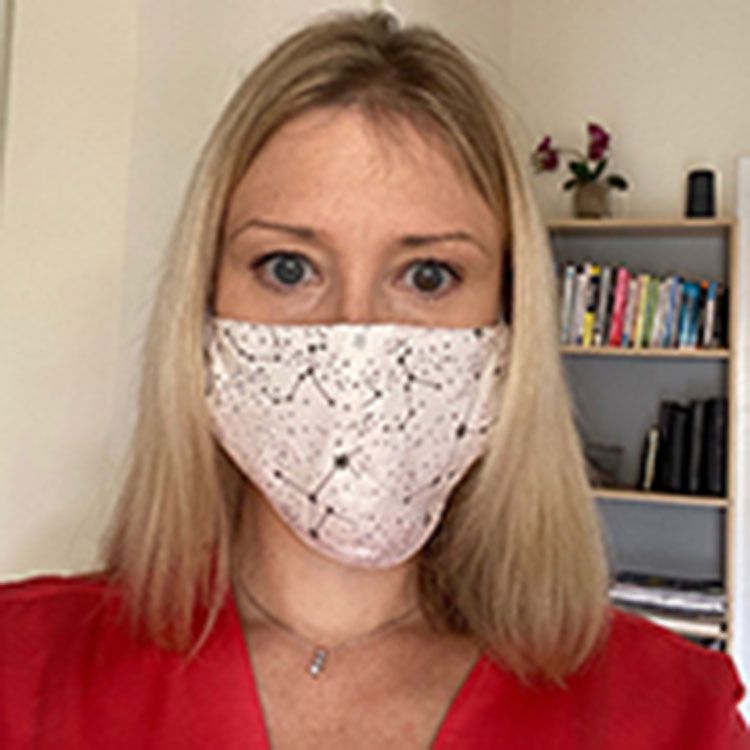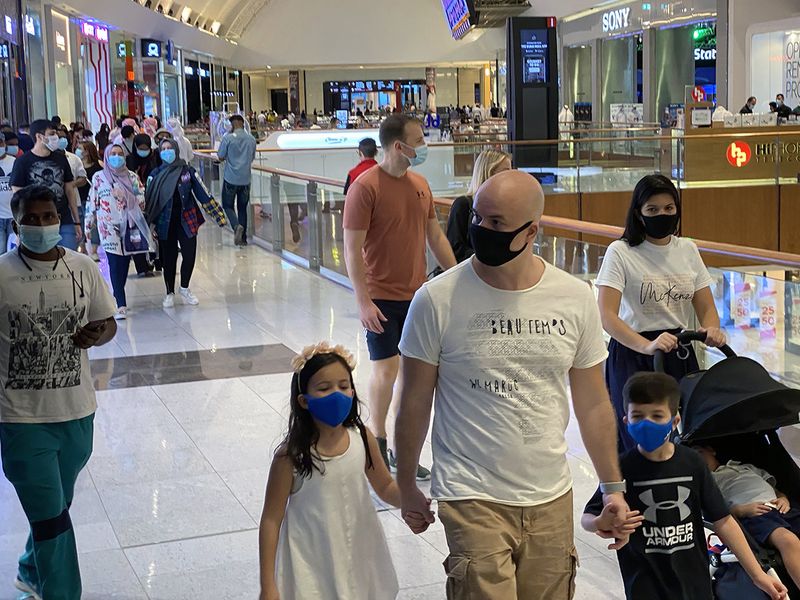
Dubai: Wearing a mask checks the spread of anything contagious. Now is that why even our infectious smiles have disappeared these days?
No matter where we go or whom we see – no one seems to be smiling anymore; the grin is visibly missing, and all that is stretched between ear-to-ear is that deadpan, but non-negotiable, device called the face mask.
As the combat against COVID-19 continues and people comply with mask mandates to stay protected, it’s become commonplace for neighbours to walk past each other in the corridor or get into the elevator without a smile, just as it is for familiar faces to look through one another on the road, in the mall or at the supermarket.

The new communication barrier
Dubai-based British expat Sam Armstrong, a PR professional, says, “I’ve just realised how much we rely on the power of a smile to connect, and not being able to share a smile with someone can feel like a communication barrier sometimes. This is especially true for new relationships, such as new clients at work, and also in the community like with my son’s new teacher at the start of the school year.”

She talks of how there have been lots of times where she has smiled but realised that the other person can’t see it. “That feels quite sad. I analyse the other ways I’m communicating differently from before, such as whether I am speaking clearly or if my voice is loud enough. And I’m putting more thought into my digital communication, trying to make emails warmer and more personable in situations where I would otherwise have been speaking to someone face-to-face.”
Smiling as a social cue
As a social cue, a smile is something we have been employing to engage with people from when we were infants. Now suddenly, having to find alternative ways of greeting or communicating is proving to be a big deal for many.
“It can get awkward, especially in fleeting scenarios like passing by someone you know and don’t really have anything to say except exchange a quick smile. The look in your eyes may not always convey that greeting with the glasses on,” says Tarun Bhatia, an Indian expat engineer in Dubai.
The science behind the smile
Much as we may think we break into a smile effortlessly, there is an actual process involved. The science behind the smile, which has lent itself to many fascinating studies, reveals how the prototypical facial expression is broadly formed as a result of the face’s zygomaticus major and minor muscles pulling up the corners of the mouth. There’s also the orbicularis oculi that causes the eye crinkle. The Duchenne smile, which is much talked about in the vast literature on smiles, is the one that reaches the eyes, making the corners wrinkle up with crow’s feet.
Now what triggers these muscles to form a smile is more than just anatomical.
While some may contend that there is little to smile about amid the pandemic – it’s worth looking at what generally causes us to smile. The sight of a close friend, a heartwarming comment, a favourite song on air … the list can go on. Every time there is some such sensory trigger, the emotional information is conveyed to the brain which in turn sends signals to the face, prompting the zygomaticus muscles into action. The whole process takes place within split seconds, which explains why the smile, which can be such a handy tool when we go about our busy lives, is being sorely missed as malls and other public places are transformed into a sea of masked faces.

No hugs and handshakes too
Alfred Gull, clinical psychologist, German Neuroscience Centre, Dubai, says, “Much as we need them, face masks can restrict facial expressions and gestures, which are very important for many people in perceiving others. Without the emotional expressions, the other person’s assessment is almost completely switched off, since the voice is less clear. Therefore, one is dependent on the perception of several senses even more than usual.”
He says since other emotional gestures, such as hugs and handshakes, are obsolete in the pandemic context, it is difficult or even impossible for people to assess their counterpart correctly. “For my daily work, it is essential to see and name these emotional expressions. Therefore, I am glad that I am able to offer therapy online,” he adds.
Alfred Gull
Dr Laila Mohamadien, specialist psychiatrist, Medcare Hospital, Sharjah, talks of the adverse impact of missing smiles.
Dr Laila Mohamadien
“These days, the brain seems to be adapting itself to perceive unsmiling or grimacing faces which can be a source of threat and stress, releasing tension and negative energy, spreading anxiety and depression. Our inability to smile is a sign of burn out and loss of interest in life. People are forcing their brains into a loop of negative energy,” she explains. But clearly, it needn’t be this way.
It pays to smile, even if no one can see it
Dr Laila says, “Cut the circle, start to be the change. Just force yourself to smile - even a fake smile or a smile that no one see can help your brain to get rid of negative energy and tension and absorb positive energy and happiness. Researchers have found that smiles produce greater activity in the brain’s left anterior temporal region, an area with clear connections to positive feelings.”
She says when we smile, the brain is stimulated to release endorphins. “Endorphins are the body’s natural painkillers, or opiates that are released in times of stress (good and bad), exercise, excitement, pain, love and other emotional states, so you can feel awesome just by smiling,” she advises.
Functions of a smile
Smiling is contagious - it helps spread cheer
A smile is a social cue, a key communication tool
People make inferences about you from your smile
Your smile determines their response behaviour too
A smile triggers positive feelings
Most important, a smile releases endorphins which are the body’s natural painkillers










